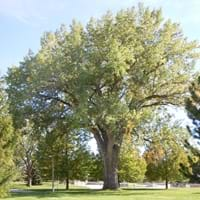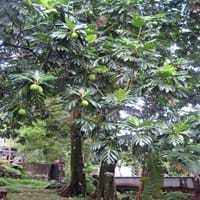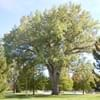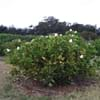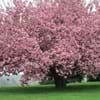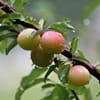Life Span
Perennial
Perennial
Origin
Northeastern United States, Mid-Atlantic United States, Southeastern United States, Central United States, Canada, Mexico
Southeastern Asia, Melanesia, Micronesia
Types
Plains Cottonwood, Rio Grande cottonwood
Jackfruit, Breadnut, Figs
Number of Varieties
Not Available
Habitat
bottomlands, Floodplain, Hardwood forests, Riverbanks
Lowland evergreen rainforest, Riverine swamp forest
USDA Hardiness Zone
3-9
10-15
Sunset Zone
1a, 1b, 2a, 2b, 3a, 3b, 4, 5, 6, 7, 8, 9, 10, 11, 14, 15, 16, 17, 18, 19, 20, 21
H2
Habit
Upright/Erect
Oval or Rounded
Flower Color
Red, Green
Yellow green
Flower Color Modifier
Bicolor
Bicolor
Fruit Color
White
Yellow, Green, Yellow green, Brown
Leaf Color in Spring
Green, Gray
Dark Green
Leaf Color in Summer
Green
Dark Green
Leaf Color in Fall
Yellow
Dark Green
Leaf Color in Winter
Not Available
Light Green
Leaf Shape
Toothed curved and flat petiole
Irregular
Plant Season
Summer, Fall
Spring, Summer, Fall, Winter
Sunlight
Full Sun
Full Sun, Partial Sun
Growth Rate
Very Fast
Fast
Type of Soil
Loam, Sand
Loam, Sand
The pH of Soil
Acidic, Neutral
Acidic, Neutral, Alkaline
Soil Drainage
Average
Average
Bloom Time
Early Spring
Indeterminate
Tolerances
Drought, Soil Compaction, Wet Site
Drought
Where to Plant?
Ground
Ground
How to Plant?
Seedlings, Stem Planting
Grafting, Rooted stem cutting, Seedlings
Plant Maintenance
Low
Medium
Watering Requirements
Keep ground moist, Requires regular watering, Requires watering in the growing season, Water daily during growing season, Water Deeply, Water more in summer
Average Water Needs, Never Over-water, occasional watering once established, Water daily during growing season, Water Deeply
In Summer
Ample Water
Lots of watering
In Spring
Ample Water
Moderate
In Winter
Average Water
Average Water
Soil pH
Acidic, Neutral
Acidic, Neutral, Alkaline
Soil Type
Loam, Sand
Loam, Sand
Soil Drainage Capacity
Average
Average
Sun Exposure
Full Sun
Full Sun, Partial Sun
Pruning
Remove dead branches, Remove hanging branches
Prune every year, Prune if you want to improve plant shape, Remove branches, Remove damaged leaves, Remove dead branches, Remove dead leaves, Remove dead or diseased plant parts
Fertilizers
fertilize in growing season, Nitrogen
20-20-20 amount, All-Purpose Liquid Fertilizer
Pests and Diseases
Aphids, Borers, Caterpillars, Insects
Red blotch
Plant Tolerance
Drought, Soil Compaction, Wet Site
Drought
Flower Petal Number
Not Available
Not Available
Foliage Texture
Medium
Coarse
Foliage Sheen
Glossy
Glossy
Attracts
Not Available
Birds, Not Available
Allergy
Hay fever, Headache, Runny nose, sneezing
allergic reaction
Aesthetic Uses
Landscape Designing
Not Used For Aesthetic Purpose
Beauty Benefits
No Beauty Benefits
Good for skin, Promotes Healthy Hair, Removes dandruff, Speed hair growth
Environmental Uses
Air purification, Forms dense stands, Prevent Soil Erosion, Shadow Tree, Shelter for wildlife, Wildlife, Windbreak
Air purification, Nesting sites for birds, Shadow Tree, Wildlife
Medicinal Uses
Anodyne, Anthelmintic, anti-inflammatory, Febrifuge
Cancer, cholesterol-lowering, Heart problems, High cholestrol, Immunity, Skin Disorders, Weight loss
Part of Plant Used
Inner Bark, Leaves, Seeds
Fruits
Other Uses
Biomass for fuel, Used as firewood, Used As Food
Used As Food, Used for its medicinal properties
Used As Indoor Plant
No
No
Used As Outdoor Plant
Yes
Yes
Garden Design
Screening / Wind Break, Shade Trees
Edible, Feature Plant, Fruit / Fruit Tree, Shade Trees, Tropical
Botanical Name
POPULUS deltoides
ARTOCARPUS altilis
Common Name
Eastern Cottonwood
Breadfruit
In Hindi
Eastern Cottonwood
Breadfruit Tree
In German
Eastern Cottonwood
Brotfruchtbaum
In French
Cottonwood Orient
Breadfruit Arbre
In Spanish
Cottonwood del Este
árbol del pan
In Greek
Ανατολική Cottonwood
αρτόδεντρο Δέντρο
In Portuguese
Cottonwood Oriental
Árvore de fruta-pão
In Polish
Eastern Cottonwood
Breadfruit drzewo
In Latin
Orientalium Poplar
Arum
Phylum
Anthophyta
Magnoliophyta
Class
Dicotyledonae
Magnoliopsida
Order
Salicales
Urticales
Family
Salicaceae
Moraceae
Clade
Angiosperms, Eudicots, Rosids
Angiosperms, Eudicots, Rosids
Tribe
Not Available
Artocarpeae
Subfamily
Salicoideae
Not Available
Importance of Eastern Cottonwood and Breadfruit
Want to have the most appropriate plant for your garden? You might want to know the importance of Eastern Cottonwood and Breadfruit. Basically, these two plants vary in many aspects. Compare Eastern Cottonwood and Breadfruit as they differ in many characteristics such as their life, care, benefits, facts, etc. Every gardener must at least have the slightest clue about the plants he wants to plant in his garden. Compare their benefits, which differ in many ways like facts and uses. The medicinal use of Eastern Cottonwood is Anodyne, Anthelmintic, anti-inflammatory and Febrifuge whereas of Breadfruit is Cancer, cholesterol-lowering, Heart problems, High cholestrol, Immunity, Skin Disorders and Weight loss. Eastern Cottonwood has beauty benefits as follows: No Beauty Benefits while Breadfruit has beauty benefits as follows: No Beauty Benefits.
Compare Facts of Eastern Cottonwood vs Breadfruit
How to choose the best garden plant for your garden depending upon its facts? Here garden plant comparison will help you to solve this query. Compare the facts of Eastern Cottonwood vs Breadfruit and know which one to choose. As garden plants have benefits and other uses, allergy is also a major drawback of plants for some people. Allergic reactions of Eastern Cottonwood are Hay fever, Headache, Runny nose and sneezing whereas of Breadfruit have allergic reaction respectively. Having a fruit bearing plant in your garden can be a plus point of your garden. Eastern Cottonwood has no showy fruits and Breadfruit has showy fruits. Also Eastern Cottonwood is not flowering and Breadfruit is flowering. You can compare Eastern Cottonwood and Breadfruit facts and facts of other plants too.
